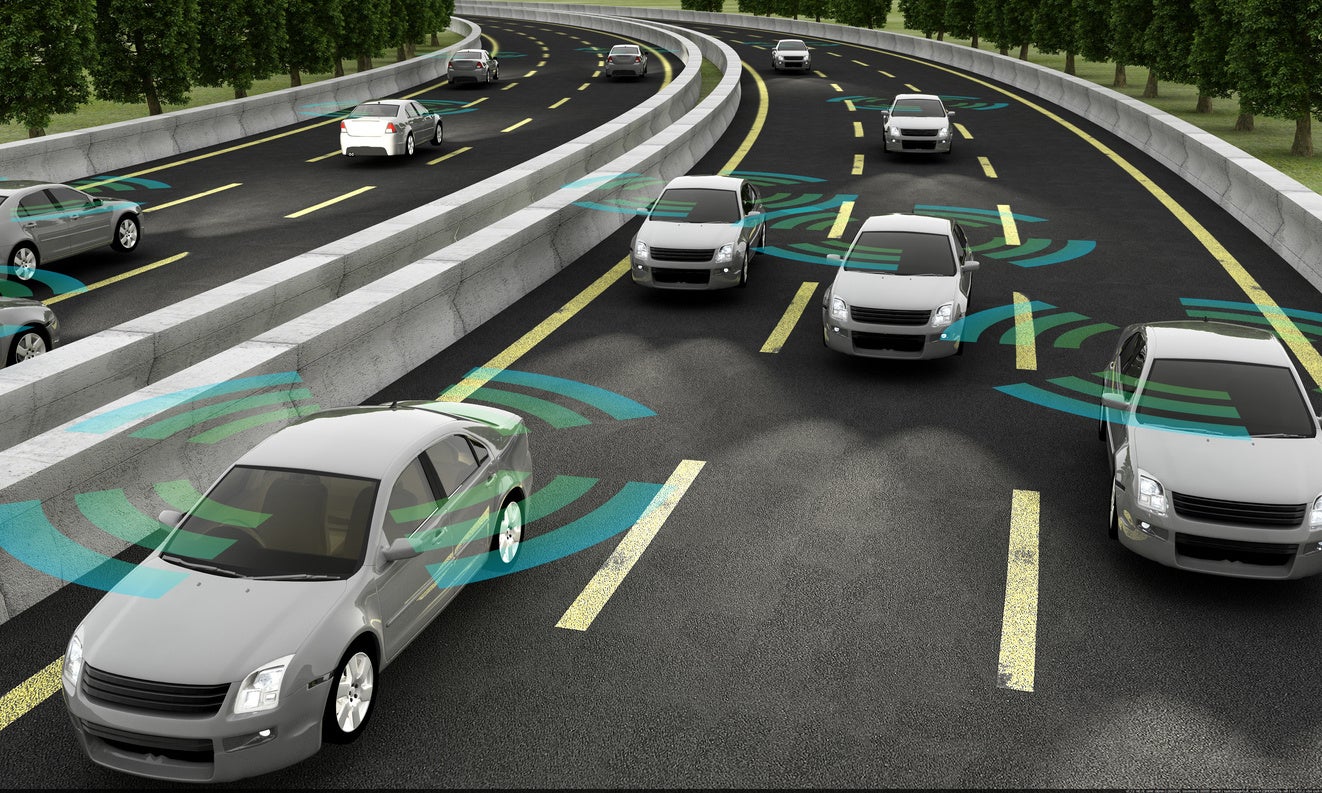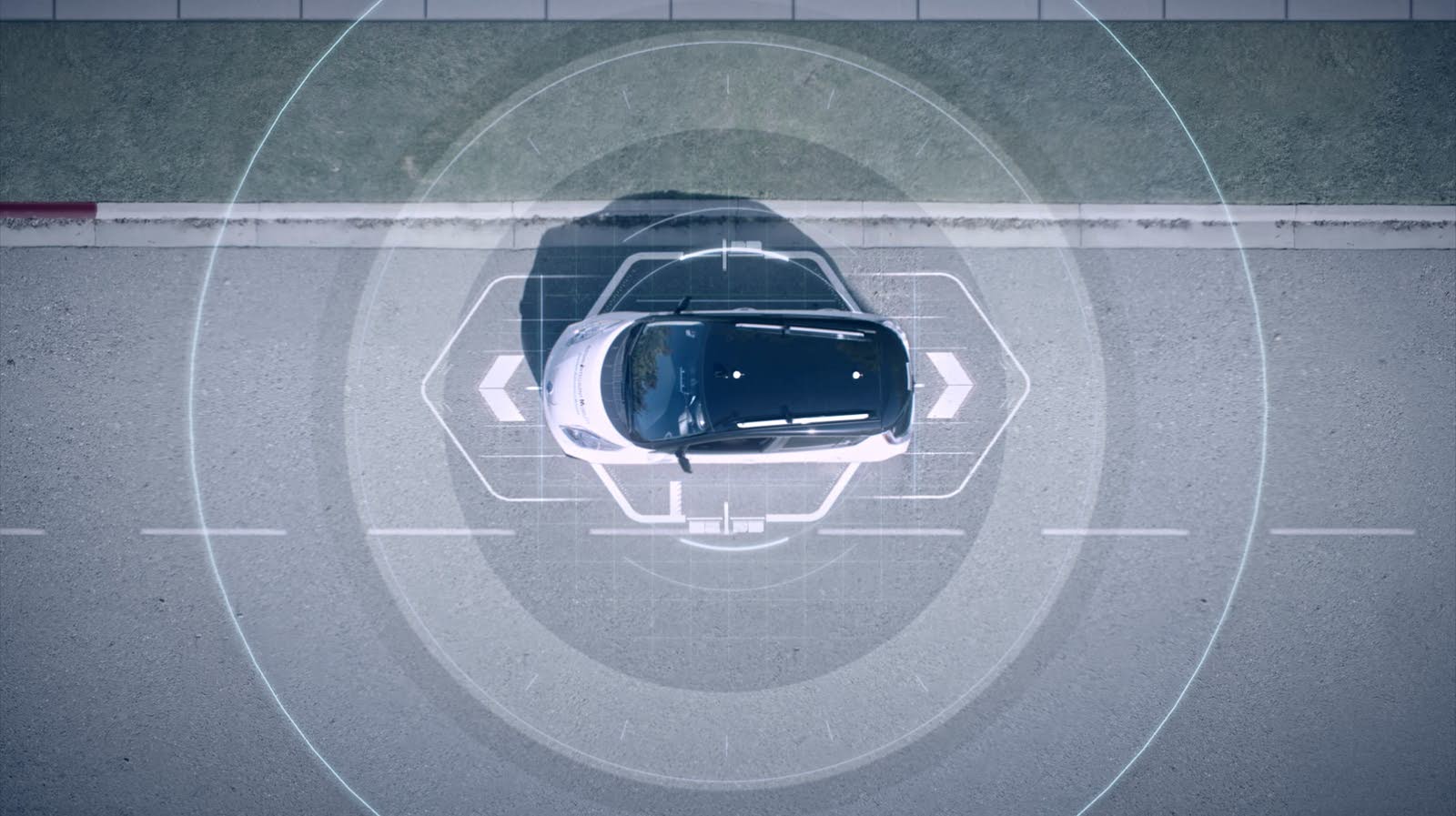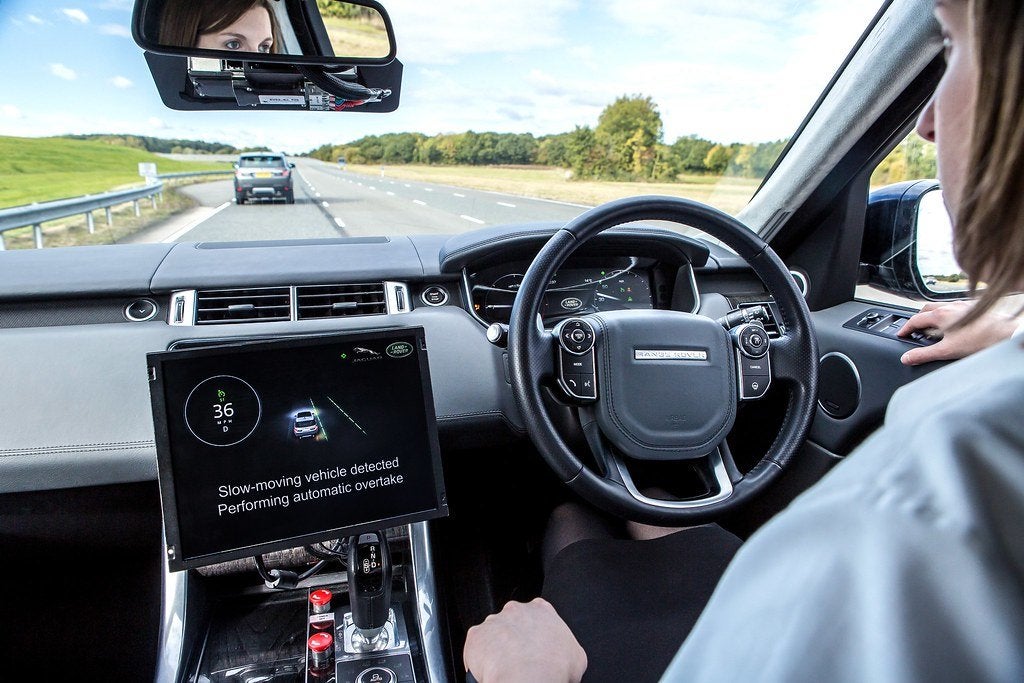Ever since the motor car was invented, there has been one thing common to every model built and sold: It requires a driver. Yet in recent years the idea of self-driving vehicles (also known as autonomous vehicles or driverless cars) has seemed closer than ever. But will the self-driving car really catch on? And, just as important, do people even want it?
What is a Self-driving Car?
As its name implies, a full self-driving car is one without the need for a human driver. It's a vision seen in many Hollywood blockbusters, and talked about by some of the world's biggest automakers, but in reality the concept of a fully autonomous vehicle could still be a long way away.
Self-driving cars should not be confused with more limited self-driving technology in the form of driver assistance systems. These include adaptive cruise control, autonomous emergency braking, automated lane keeping systems, blind spot monitoring, rear cross traffic alert and more. The idea of such systems is to assist the driver behind the wheel by monitoring the car's surroundings and taking over the controls when needed, as opposed to taking over control of the vehicle entirely.
At the more advanced end of driver assistance systems (think Tesla Autopilot or traffic jam assist modes on cars such as BMW, Audi and Mercedes), a vehicle will be able to steer and brake itself, as well as keep a set distance from the car in front. However, in all cases it remains the driver's responsibility to remain in control of the car, even if his or her hands are removed from the steering wheel.
So where does a system stop being driver assistance, and start being fully self-driving? Well, a fully self-driving car should be able to undertake every part of a journey without requiring any input from the driver,. It shouldn't even need the driver to take over in an unexpected situation or an emergency.
Put simply, the best test is whether you can set your destination, then go to sleep, and wake up when you arrive. If you can’t do that, the car isn’t fully self-driving - no matter what its manufacturer might try to tell you.

Why Now?
The move toward automated driving systems is not driven only by technology; it reflects how society’s attitudes to car ownership are shifting. The emergence of online social networks for communicating with friends and family, combined with the growth of Internet shopping and the rise of ride-hailing services like Uber (which has run trials of driverless taxis in the U.S.) and Lyft, have all been cited as reasons people no longer need to own a car—or even learn to drive.
Add to this the high cost of driving lessons and insurance, not to mention the growing confidence of technology firms like Tesla (which in its Autopilot system has what is arguably the most widely recognised driver assistance technology of all) and Google that have entered the market without the help of established car manufacturers, and it's not hard to see that self-driving cars could take off.
Are Self-driving Cars Safe?
Well, that’s the theory. In fact, they introduce the possibility of a dramatic - or even total -reduction in road deaths and casualties. This, in fact, is one of the main benefits advocated by proponents of the technology.
Thatcham Research, the motor insurer’s automotive research centre, is a leading authority on autonomous driving in the UK, and it says more that at least 90% of deaths and injuries on our roads today involve human error. The theory goes that if self-driving systems can be developed that are truly reliable, they won’t have this problem. They’ll also be incapable of dangerous or unpredictable driving.
Engineers even envisage a future in which self-driving cars can communicate with one another, allowing them to take avoiding action far more quickly and alerting each other to hazards ahead.
Of course, the big caveat to this is how self-driving cars interact with other traffic on our roads – and indeed, vice versa. While it’s a good bet that self-driving cars will increase safety if they’re used in situations where human-driven cars are banned – for example, on roads closed to other traffic – how well they’ll deal with sharing the roads with human drivers is less certain.

How Driverless Cars Work
At their most basic, driverless cars work using a combination of three key pieces of technology:
• Radar sensors mounted around the car allow it to identify other traffic.
• Cameras scan the road for pedestrians, cyclists, and road furniture such as signs and traffic lights.
• LIDAR (laser) sensors monitor the edges of the road and look for the white lines that divide lanes.
The car’s central computer system processes information from these three sources to create a picture of what’s around it and activates the steering, brakes, and accelerator so as to guide the car without crashing.
In addition, driverless cars can use GPS systems to establish their whereabouts and react to live traffic conditions and mapping instructions, and in future they will boast significantly improved connectivity and communication not only with other vehicles, but also with road infrastructure. Machine learning and artificial intelligence will also play a part, as self-driving cars will need to be able to learn and adapt to new environments that may not have been envisaged when they were built and programmed.

With driverless cars representing such a dramatic shift from the norm, manufacturers and legislators are understandably cautious about how the technology gets introduced. Thatcham Research, the motor insurer’s automotive research centre, is a leading authority on autonomous driving in the UK, and it has laid out what it believes are four stages to the adoption of fully autonomous cars.
As it stands, Thatcham believes we have already witnessed the first stages of driverless cars in the form of ‘assisted driving’, or technology that can intervene to prevent a crash occurring if the driver’s attention lapses. For example, systems like lane-keeping assist can automatically steer a car back into its lane if it begins to drift, and automatic emergency braking can apply the brakes to avoid hitting other vehicles (or in some cases, pedestrians). Crucially, despite the presence of such aids, it remains the driver’s responsibility to be in full control at all times.
By 2021, Thatcham believes we’ll have reached what it calls the third stage of driverless technology, allowing fully autonomous driving on certain sections of motorway. For the first time, drivers won’t be required to be in control or even continuously monitor their surroundings. They’ll be allowed to take on more involved tasks such as checking email or reading a book.
Those wanting to experience this kind of driverless technology in an urban environment will, according to Thatcham’s predictions, need to wait until 2025. By this point it believes the technology and legislation will be in place to allow full door-to-door capability.
However, it should be noted that some commentators don't share Thatcham's optimism. Many car manufacturers are now rowing back their driverless car predictions as they realise just how complex the task of building an artificial intelligence system that an accurately and safely drive a car in all weathers and in any situation it might encounter out on the road.
Indeed, some experts now believe that the time may never come when fully driverless cars - ones that can drive anywhere, anytime - exist. John Krafcik, who heads up Waymo, which is Google's driverless car arm, told an online technology conference in late 2018 that "autonomy will always have some constraints" - in other words, while they may be occasional, there will always be some instances in which a driver will have to take over the controls.
Driverless Cars Already On the Road
With driverless cars representing such a dramatic shift from the norm, manufacturers and legislators are understandably cautious about how the technology gets introduced. Thatcham has laid out what it believes are four stages to the adoption of fully autonomous cars.
As it stands, Thatcham believes we have already witnessed the first stages of driverless cars in the form of ‘assisted driving’, or technology that can intervene to prevent a crash occurring if the driver’s attention lapses. For example, systems like lane-keeping assist can automatically steer a car back into its lane if it begins to drift, and automatic emergency braking can apply the brakes to avoid hitting other vehicles (or in some cases, pedestrians). Crucially, despite the presence of such aids, it remains the driver’s responsibility to be in full control at all times.
Thatcham had predicted that we’d have reached what it calls the third stage of driverless technology by 2021, allowing fully autonomous driving on certain sections of motorway, and indeed, the UK Government has now created the legal framework for such cars to exist.
However, the technology has not yet caught up; while certain cars offer systems that will allow a level of steering and speed control, none is yet advanced enough to drive fully autonomously.
The possible exception to this is Tesla’s Autopilot, which will allow what it calls “full self-driving” – though many experts still believe the level to which this system still requires driver oversight means it shouldn’t be marketed as such. Some also point out that Tesla’s system doesn’t use LIDAR, which renders it less reliable than systems which do.
Those wanting to experience driverless technology in an urban environment will, according to Thatcham’s predictions, need to wait until 2025. By this point it believes the technology and legislation will be in place to allow full door-to-door capability.
However, it should be noted that some commentators don't share Thatcham's optimism. Many car manufacturers are now rowing back their automation predictions as they realise just how complex the task of building an artificial intelligence system that an accurately and safely drive a car in all weathers and in any situation it might encounter out on the road.
Indeed, some experts in the automotive industry now believe that the time may never come when fully driverless cars - ones that can drive anywhere, anytime - exist. John Krafcik, who heads up Waymo, which is Google's driverless car arm, told an online technology conference in late 2018 that "autonomy will always have some constraints" - in other words, while they may be occasional, there will always be some instances in which a driver will have to take over the controls.
What does Level 2, 3, or 4 Autonomy Actually Mean?
The Society of Automotive Engineers (SAE) has come up with a set of standards in order to help consumers to understand the different levels of autonomy that are set to become available. They are as follows:
Level 0: this level of autonomy is the most basic. It refers to systems that provide visual and audio prompts for safety reasons, and can also back these up with interventions through the steering and brakes. Examples might include lane departure warning and automatic emergency braking.
Level 1: this means the vehicle is equipped with one or other system that provides support to the driver through the steering, brakes or acceleration. In other words, this level refers to a car that might be fitted with lane centring or adaptive cruise control, but one in which neither of those systems can work in conjunction with each other.
Level 2: When the above two systems are combined, this results in Level 2. What that means is that a car equipped to this standard can both accelerate or brake to maintain a set speed, hold the car in the centre of its lane at the same time, and possibly even change lanes on command. However, the driver is still considered to be driving, and must be paying attention to the road and traffic conditions even if their hands and feet are away from the controls.
Level 3: This is the first level of autonomy at which the car can drive itself, though at this stage it can only do so under certain conditions – for instance, at slower speeds or in particular environments. However, these systems may not be able to cope with every eventuality, and may request the driver to take over again, so the driver must be ready to comply.
Level 4: At this level, the vehicle should not require you to take over driving, and as such it may not be fitted with a steering wheel or pedals. However, a Level 4 vehicle will still only operate in certain conditions or circumstances – for instance, on a preordained route or below certain speeds – and may stop at the side of the road if those conditions are not met.
Level 5: A Level 5 autonomous car should be fully self-driving. It should never need you to take over driving, and should be able to drive on any road, in any circumstances, and in all weather conditions.
Driverless Vehicles Already On the Road
The UK Government is on record as wanting to be at the forefront of driverless-car technology. There are already driverless car trials running throughout the country, arguably the most impressive of which was the HumanDrive project, in which researchers undertook a 230-mile journey in an autonomous Nissan Leaf, with the car operating in fully autonomous mode for 99 per cent of the trip.
Meanwhile, the CAVForth trial will see automated buses undertake a 30-mile route between Fife and Edinburgh. These buses should be able to undertake each journey entirely autonomously, though a safety driver will be present in case of emergency.
One thing is clear: Whether you love the thought of sitting back and letting the car do the work or dread the idea of technology taking control, we are now well on the way to driverless cars - in some form - becoming a reality.

What’s it Like to Ride in a Self-Driving Car?
We got the chance to get behind the wheel of a self-driving prototype built by Audi, and based on an A7 Sportback. It was a surreal experience.
This was far from a fully self-driving car – it still had a steering wheel and pedals, and the autonomous technology on board was only available on a motorway. The system was not able to deal with the more complex demands of urban driving.
Still, Audi was confident enough in the technology to let us loose in the driver's seat, and in the real world too. Using GPS, the car could tell when it was on the motorway, and would arm the system. You would then activate it using two buttons on the steering wheel. This would then slide away from you, as would the pedals, to confirm the car was now in self-driving mode.
From here on in, the car could work out the speed limit using a combination of location data and cameras, and would do its best to maintain this speed if conditions allowed. It would hold its position in a lane, and change lanes by itself when it approached a slower car, indicating before doing so.
Even more impressively, it could tell when a car was approaching in the faster lane, and hold off on commencing the manoeuvre until that car had passed. It was certainly an impressive and confidence-inspiring display, though not entirely without glitches; at one point the A7 tried to pull out into the fast line while a car was still there, forcing us to grab the wheel.
It was proof that, as incredible as this technology is, there’s still quite a way to go before one can reliably turn one’s attention to doing other things and truly let a car drive itself.

